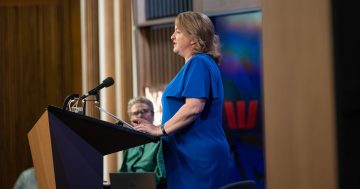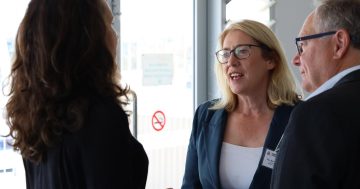According to Stewart Hawkins*, Vision Super’s recently appointed first female Chair, Lisa Darmanin says the reasons women lag behind men in the size of their retirement nest eggs has more to do with broad systemic issues than it does with the superannuation system itself.
 At the beginning of this financial, year former ASU branch executive president and organiser Lisa Darmanin was appointed (by unanimous board decision) to be the first female chair of Vision Super.
At the beginning of this financial, year former ASU branch executive president and organiser Lisa Darmanin was appointed (by unanimous board decision) to be the first female chair of Vision Super.
She had been a board member of the fund since 2018.
Vision is one of Australia’s oldest funds, established around 70 years ago, but sits among the smaller ones in Australia’s super landscape with 85,000 members and around $12 billion in AUM.
It also boasts a rarity amongst super funds: a majority female board.
Darmanin said her early priority with the new position was to lead the good work that started before she arrived.
“It’s not like there’s a crisis to respond to… it’s more about how we continue to go from being good to being great,” she said.
Her point being that the fund’s returns are already strong and it already has good outcomes.
As for the new challenges that the Your Future Your Super legislation has thrown at the industry she sees them as “just the next phase” of how the fund adapts.
“This is just the latest set of obligations that inform our strategy and how we develop that every year,” she said.
“I do think that having a continued focus on risk and compliance is important and that clearly will need to continue.
And I think all funds need to be looking at how they adapt to the changes around stapling and we’re working on that now, along with (the) best financial interest (changes) and what that means for us.”
Gender equity
More broadly, Darmanin expressed strong opinions when it came to the gender gap which persists in superannuation outcomes.
Studies suggest women retire with around 40 per cent less super than men do.
In her opinion there are two main drivers for this inequity and the first has nothing to do with the superannuation system at all.
“It’s the fact that there is a gender pay gap… it’s currently 13.4 per cent in Australia, and it varies depending on industry, it can be much higher than that… when super is paid on a per centage of your salary, if you earn less, you’re going to have less,” she said.
She said part of the problem is that women’s work is undervalued, in the community sector in particular, and she suggested there was a “whole suite of reforms” which needed to be done in that space.
But the other factor affecting women’s super balances was that they were more likely to take breaks in their working lives than men were.
“The super system is really designed around one breadwinner, who starts work at 20, continues working without a break, until they’re 55, or 60 and their salary slowly increases over time, and they work full time.
“That is not the reality for a lot of (women),” she said.
“A superannuation system that’s designed around a working life that doesn’t reflect a significant portion of the population (also) drives the gap.”
In terms of a solution Darmanin is an advocate of immediately increasing the super guarantee to 12 per cent along with immediately removing the $450 threshold.
But she also has more radical thoughts on possible solutions.
“It might be amending the discrimination laws so that employers can pay a higher super guarantee for their women workers than men,” she said.
“And the other thing that’s important is around changing workplaces so that the burden about (taking a gap) doesn’t always fall on women, making it easier for men to access flexible work arrangements, so that the caring responsibilities (are) more evenly split in households, which reduces the need for women to take time out of the workforce.”
Leadership
In terms of diversity of leadership in superannuation in Australia, Darmanin says she’s “pretty optimistic” about how things have moved in recent years.
“It’s not so much a rarity these days as it was when I was first working, that I was the only woman in the room. And so that’s really good,” she said.
“But I think it’ll be nice when we don’t have to talk about diversity and it’s not a thing where, you know, it’s the first woman chair.”
*Stewart Hawkins is a financial journalist, editor and TV producer.
This article first appeared at investmentmagazine.com.au.











